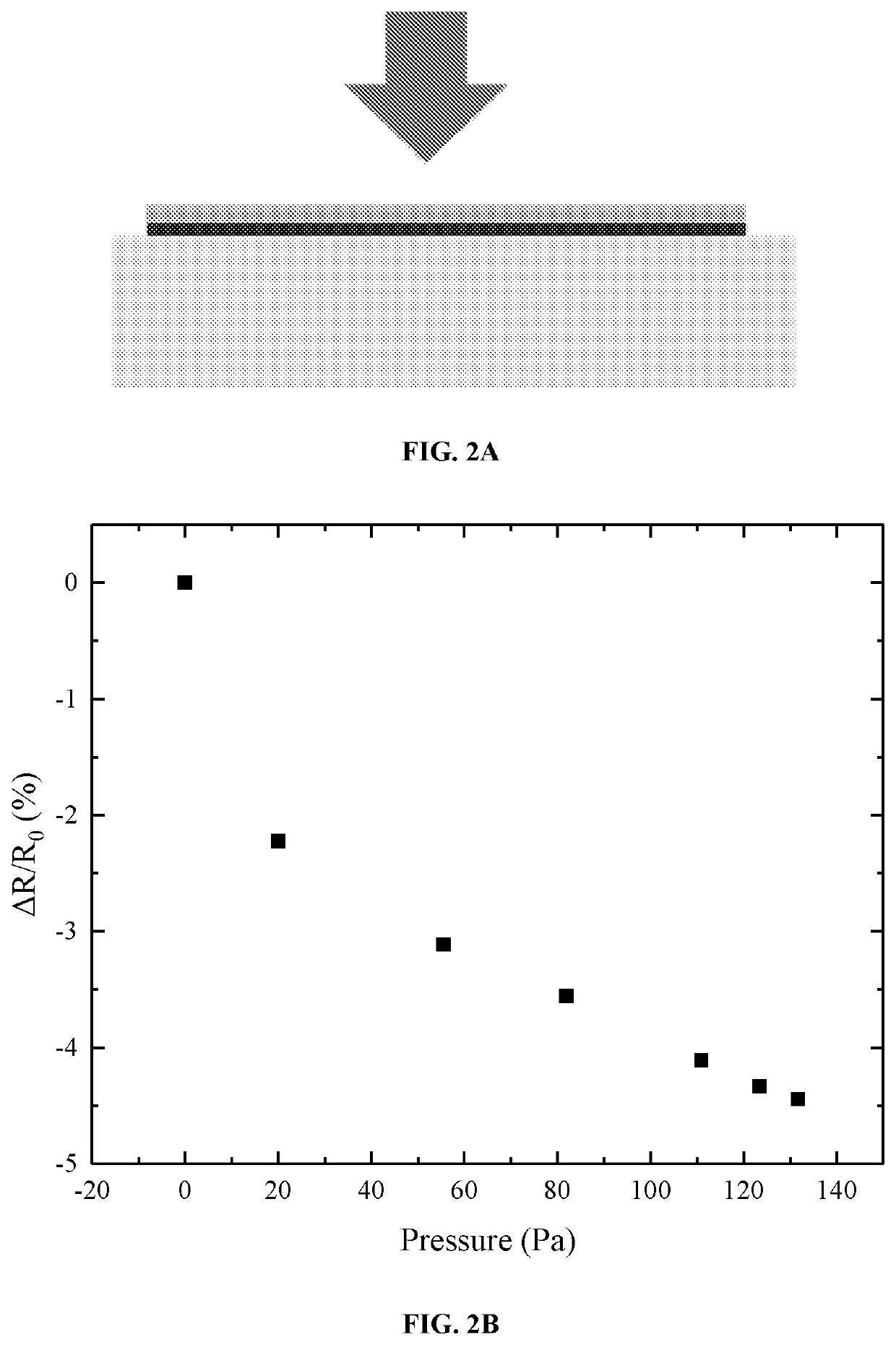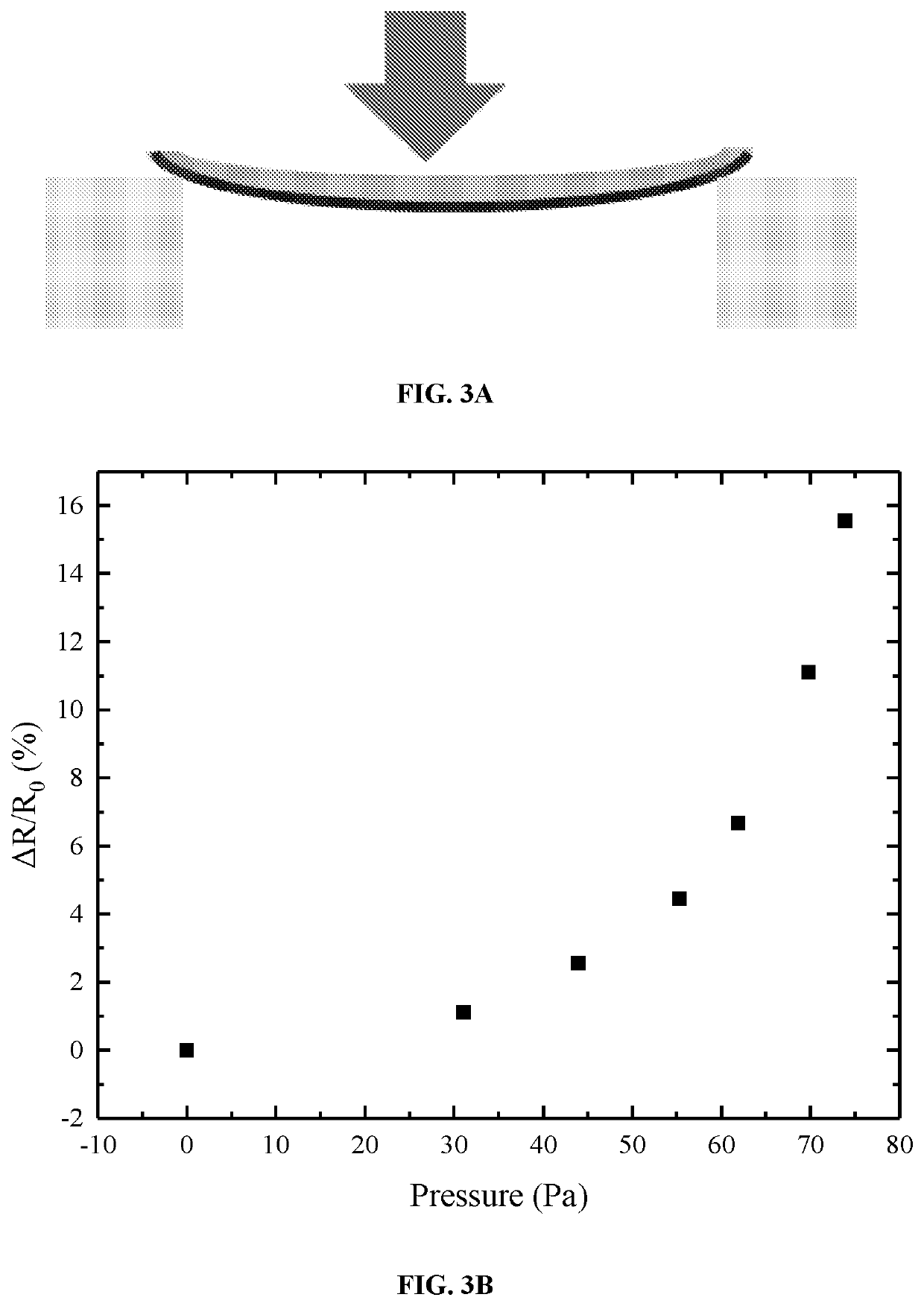Sensor
a sensor and force technology, applied in the field of sensors, can solve the problems of high toxicities of lead-containing materials such as pzt, lack of flexibility, and the inability to easily manufacture flexible components of ceramic materials
- Summary
- Abstract
- Description
- Claims
- Application Information
AI Technical Summary
Benefits of technology
Problems solved by technology
Method used
Image
Examples
example 1
ication Process
[0118]A film of a sensor material is manufactured as follows:[0119]Prepare silver nanowire solution by dispersing the nanowires in a polar solvent (typically methanol or any volatile alcohols, or water). The concentration of nanowires can be set between 1.0 to 4.0 mg / ml.[0120]Deposit silver nanowires on a glass slide. The shape and size of glass slide can be varied and is used to determine the final dimensions of the film. For instance, the area may be 1.5×1.5 cm2, 2.5×2.5 cm2, 5×5 cm2 or 10×10 cm2.
[0121]Several deposition methods can be used: drop casting, spin coating or printing. Drop casting and printing are preferred as thicker conductive films can be produced. Typical concentration of nanowire on glass should be greater than 0.16 mg / cm2. Films with lower concentrations typically result in lower conductivity films which makes measuring their electrical response more difficult.[0122]Allow film to dry. Slight heat can be applied (around 80° C.) if water is used as ...
example 2
izing Electrical Properties Under Stress
[0130]Equipment: Agilent E4980A Precision LCR Meter (can measure both resistance and capacitance). Kiethley 2400 source meter can also be used for measuring resistance.
Measurement of Compressive Stress / Resistance (See FIG. 2):
[0131]Attach two strips of copper tape to two opposite corners of the film.[0132]Place film on a non-conductive surface.[0133]Connect the ends of each copper tape to the measurement device using wires and clips.[0134]Place small loads, ranging from 5 to 80 g on the film and record the corresponding value of resistance.
Measurement of Tensile Stress / Resistance (See FIG. 3):
[0135]Attach two strips of copper tape to two opposite corners of the film.[0136]Place the two corners of film onto two separated supporting surfaces, with the conductive side (black line in FIG. 3A) facing down.[0137]Connect the ends of each copper tape to the measurement device using wires and clips.[0138]Place small loads, ranging from 5 to 80 g on the...
PUM
| Property | Measurement | Unit |
|---|---|---|
| Fraction | aaaaa | aaaaa |
| Fraction | aaaaa | aaaaa |
| Fraction | aaaaa | aaaaa |
Abstract
Description
Claims
Application Information
 Login to View More
Login to View More - R&D
- Intellectual Property
- Life Sciences
- Materials
- Tech Scout
- Unparalleled Data Quality
- Higher Quality Content
- 60% Fewer Hallucinations
Browse by: Latest US Patents, China's latest patents, Technical Efficacy Thesaurus, Application Domain, Technology Topic, Popular Technical Reports.
© 2025 PatSnap. All rights reserved.Legal|Privacy policy|Modern Slavery Act Transparency Statement|Sitemap|About US| Contact US: help@patsnap.com



